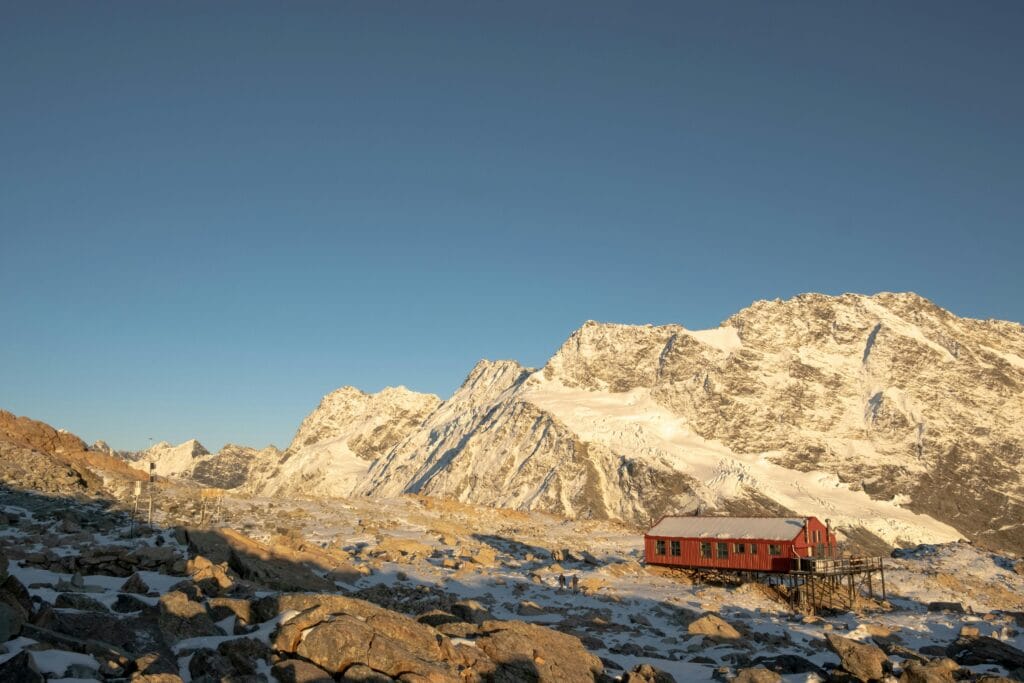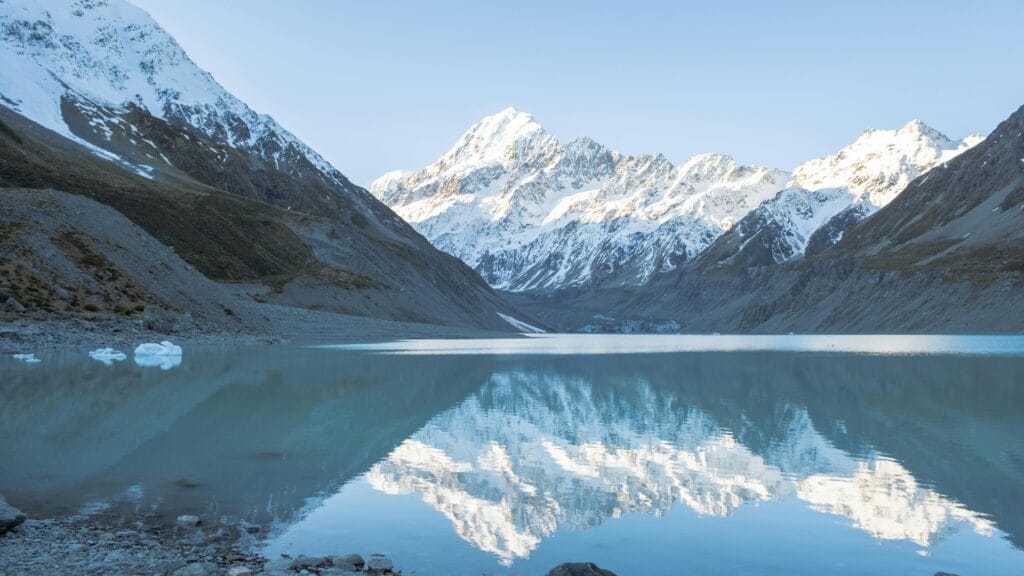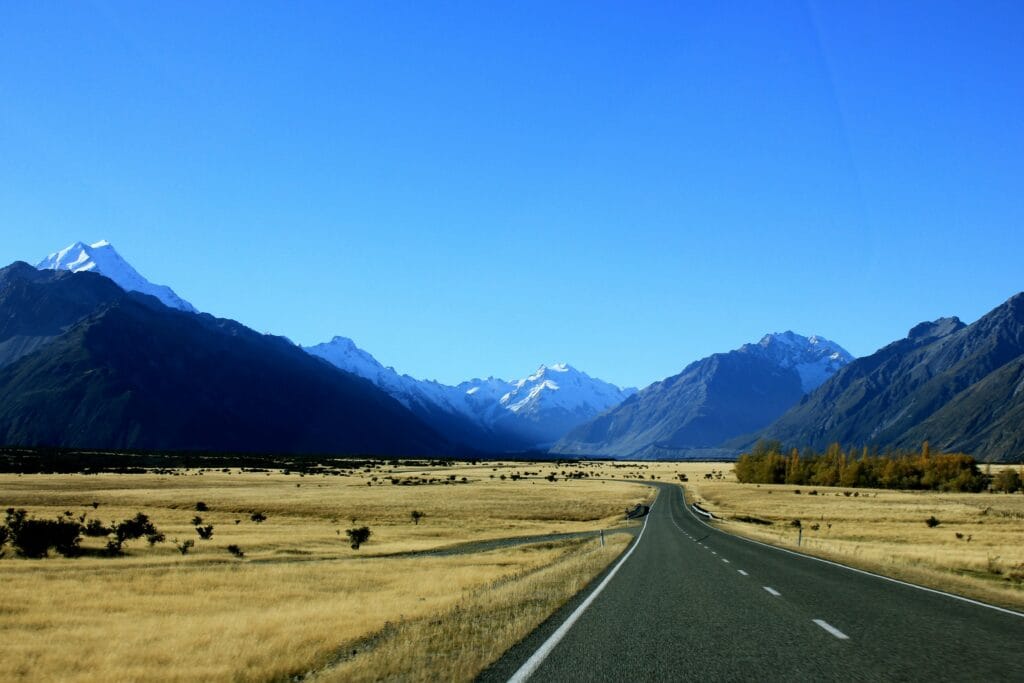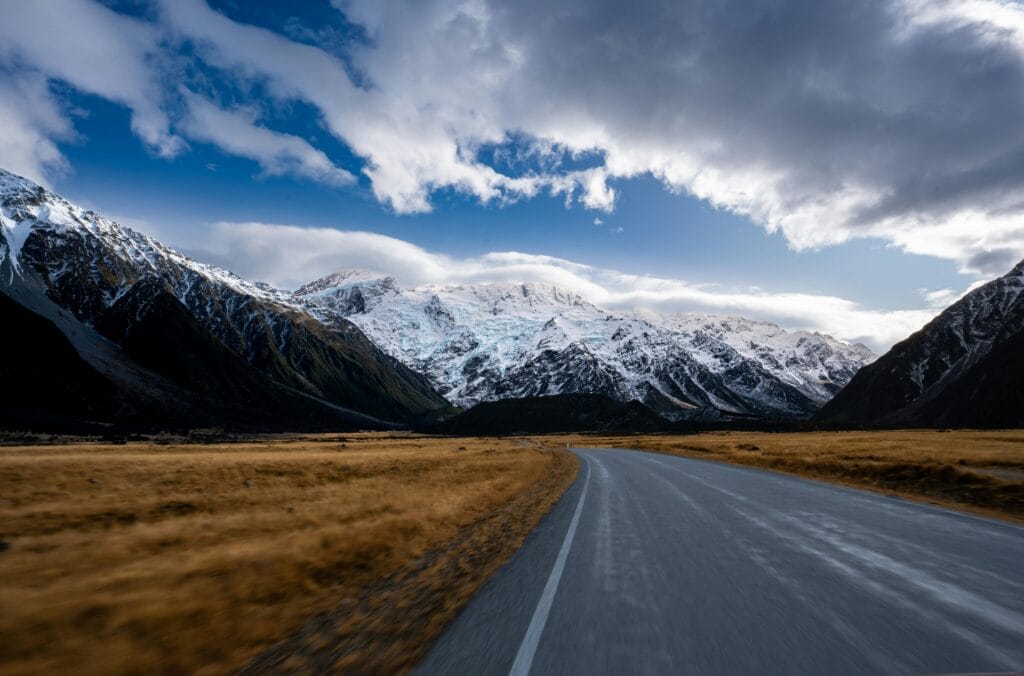Te Wahipounamu
Te Wahipounamu, nestled in the picturesque southwest of New Zealand, is a unique gem renowned for its extraordinary landscapes and rich cultural history. This UNESCO World Heritage Site show off a captivating blend of towering mountains, verdant rainforests, crystalline lakes, and untamed coastlines. It promises a one-of-a-kind, mesmerizing experience for every visitor, unveiling the allure of its natural marvels.
Te Wahipounamu is a special area known for its unique natural environment, home to many plants and animals, some of which can only be found in New Zealand. This region includes several national parks, such as Fiordland National Park and Westland Tai Poutini National Park, both showcasing breathtaking landscapes and a variety of wildlife. These parks serve as a reminder of the beautiful balance that exists in nature around the world.
Te Wahipounamu is not only known for its stunning scenery but also for its rich cultural history. This area is filled with important Māori heritage sites that describe the stories of the Indigenous people and their strong bond with the land. Visiting Te Wahipounamu means experiencing beautiful landscapes while also learning about its fascinating history and culture in a respectful way.
Te Wahipounamu offers an incredible adventure in New Zealand, whether you’re enjoying the peaceful beauty of the stunning Milford Sound fjords or experiencing the excitement of hiking through lush rainforests. This beautiful region is full of amazing natural sights and rich cultural experiences. With so much to explore and discover, every visit is truly memorable and filled with excitement.
Table of Contents
Where is the Te Wahipounamu located?

Te Wähipounamu, located in the southwestern region of New Zealand’s South Island, is a stunning area that covers a significant part of the country—about 10% of it, or 2.6 million hectares. This beautiful landscape stretches for 450 kilometers and reaches 40 to 90 kilometers away from the Tasman Sea, offering breathtaking views and a variety of natural features.
The site highlights many examples of how the Earth’s geology, weather, and glaciers have shaped our planet over time. One of its key features is the Alpine Fault, which is an important geological line that divides the region. This fault marks the boundary between two major tectonic plates, the Indo-Australian and the Pacific plates. It’s significant because it’s one of only three major plate boundaries found on land in the whole world.
The movement of two large sections of the Earth’s crust, known as tectonic plates, creates the stunning Southern Alps, also called Kä Tiritiri o te Moana. This mountain range rises to nearly 4,000 meters (about 13,000 feet) within just 30 kilometers of the coastline, resulting in a beautiful and striking landscape that is unique to the region.
Inscription
Te Wahipounamu, a beautiful area in the southwest of New Zealand, was recognized as a UNESCO World Heritage Site in 1990. It covers about 2.6 million hectares and is home to four national parks: Aoraki/Mount Cook, Fiordland, Mount Aspiring, and Westland Tai Poutini. This remarkable region is celebrated for its stunning landscapes, diverse wildlife, and unique geology, making it one of the most significant natural areas in the world.
What is the meaning of Te Wahipounamu?
Te Wahipounamu translates to “the place of greenstone,” which emphasizes the importance of greenstone, also known as pounamu, to the Māori people who have inhabited this region for many years. The area is known for its beautiful scenery, dominated by the Southern Alps, making it a great spot for outdoor recreation like hiking, skiing, and wildlife watching.
What is the Te Wahipounamu?

Te Wähipounamu is a breathtaking area in New Zealand that showcases stunning landscapes from the mountains down to the sea and inland valleys. These landscapes have been shaped over thousands of years by natural processes like erosion and the movement of glaciers. Spanning 2.6 million hectares, this region is one of the least affected by human activity, making it one of the most pristine and ecologically healthy parts of New Zealand. Its untouched nature is a testament to the beauty and resilience of our planet. The boundaries are carefully set to reflect the important features of the area. The property includes all its values, which are made up of a largely connected network of protected land covering a large part of the southwestern area of the South Island.
The region is home to four stunning national parks: Fiordland, Mount Aspiring, Mount Cook, and Westland, which together span an impressive 1.7 million hectares. Beyond these parks, there are also other protected lands, including two nature reserves, three scientific reserves, 13 scenic spots, four areas dedicated to wildlife management, five ecological regions, and various conservation areas. This diverse landscape offers a wealth of natural beauty and various ecosystems to explore and appreciate, each with its own unique charm and significance. Also, there is a small private reserve that spans 20 hectares. This area is located next to other protected public conservation lands, and it has a buffer zone that helps protect its natural features.
What is Te Wahipounamu famous For?
Te Wahipounamu, located in Southwest New Zealand, is renowned for its breathtaking natural beauty. This incredible region features towering mountains, vast glaciers, majestic forests, wild rivers, rugged coastlines, and deep fiords and lakes. One of its unique gems is Solander Island, which has the remnants of an extinct volcano. The temperate rainforests here are truly exceptional, showcasing a wide range of plant and animal existence, and are better preserved than similar forests found anywhere else in the world. Te Wahipounamu is a treasure trove of stunning landscapes and rich biodiversity, making it a remarkable place to explore.
The stunning landscape of this park in southwest New Zealand has been shaped by ancient ice ages, creating beautiful features like fjords, steep coastlines, cliffs, lakes, and waterfalls. Much of the park is covered in forests made up of ancient southern beech trees and podocarps that are over 800 years old! Among the unique wildlife, you’ll find the alpine parrot, the only parrot that lives in mountain regions around the world, and the takahe, a large bird that can’t fly and is considered rare and endangered, adding to the allure of this unique region.
Why is the Fiordland National Park Famous?

Fiordland National Park is in the southwestern part of New Zealand’s South Island and is known for its stunning natural beauty and unique environments. The park is home to 15 deep, narrow inlets known as fiords that stretch into the land from the ocean. Over the last million years, many forested areas in this region have gradually climbed more than 1,000 meters up the hills along the coast. Visitors to Fiordland can enjoy a variety of outdoor activities while taking in the incredible landscape.
In the southeast, you’ll discover wide valleys shaped by glaciers, which are now home to beautiful lakes. Here, you can also see the amazing Franz Josef and Fox Glaciers, which descend into vibrant rainforests. The area features impressive hills with special types of rocks that lead to the Tasman Sea. There are many outdoor activities, such as hiking, skiing, watching wildlife, and water sports. This makes it an excellent destination for anyone who loves adventure and outdoor fun!
The Ecosystem of the Te Wahipounamu
The ecosystems of Te Wähipounamu are home to a wide range of New Zealand’s unique native animals. This variety shows how isolated the region has been for a long time, allowing these species to thrive without the threat of mammals that are common in other parts of the world. The area is home to many different types of natural environments. You can find fresh water in places like rivers and lakes, beautiful temperate rainforests filled with greenery, and high mountainous regions where the air is crisp and clear. These diverse ecosystems span large areas, each with its own unique climate and height, and they support a wide various of plants and animals.
New Zealand’s natural ecosystems are incredibly important and largely unchanged, showcasing some of the best-preserved plant and animal life in the world. This area is a modern-day example of what existed in the ancient supercontinent Gondwana. The way these plants and animals are organized relates closely to the various physical changes happening in the environment around them. Te Wähipounamu, located in the southwest of New Zealand, is considered one of the best examples today of the ancient land known as Gondwanaland. This area is incredibly important because it showcases unique ecosystems that reflect the natural history of our planet.
Geological and Biodiversity of the Te Wahipounamu

Te Wähipounamu is a truly amazing place because its land was formed by natural forces like the earth’s rocks and weather. This area has a long stretch of mostly untouched nature, showing a wide variety of plants and animals. Thanks to its unique environment, many different landscapes and homes have developed, allowing various species to thrive in different climates and elevations. What makes it even more special is that much of this region remains in its natural state, highlighting the beauty and diversity of nature.
Nature is full of fascinating changes happening all around us. For example, in the beautiful temperate rainforests, plants and animals are always interacting and adapting to one another. When glaciers melt, they create new areas for plants to grow, which is part of a natural progression called plant succession. You can also observe how plants evolve over time in places like sandy beach ridges and along riverbanks. At the edges of glacial lakes, you’ll find different types of plants because the conditions there can vary. It’s incredible to see how life flourishes in these diverse environments!
Many plants have learned to grow in special types of soil, like those in very rocky or mineral-rich areas where other plants struggle to survive. These examples highlight how nature is always changing and finding new ways to adapt. The large, mostly unspoiled freshwater areas, the diverse mountain ecosystems, and the special plants that only grow in these high-altitude places all highlight the incredible variety of life in these regions. The long-time separation of certain animal groups, like the kiwi in South-Westland, demonstrates how these species have developed in their own unique ways over time.
Preservation of the Te Wahipounamu
Preservation of Te Wahipounamu is a big task that involves many different aspects. It’s about protecting the environment, honoring the local culture, promoting responsible tourism, supporting scientific studies, and involving the community. By working together on all of these areas, we can help ensure that the beautiful landscapes and rich cultural stories of this region are preserved for everyone to take pleasure now and in the future.
Te Wahipounamu is a truly beautiful area known for its amazing natural landscapes and unique wildlife. It’s really important to preservation of this environment, and there are different ways to do that. The region is safeguarded by a system of national parks and protected areas that work together to keep its ecosystems healthy and thriving.
Why should you visit the Te Wahipounamu as a visitor?

Visiting Te Wahipounamu is an incredible experience that showcases breathtaking nature and rich culture. This wonderful area is home to beautiful landscapes, including lush rainforests, towering cliffs, and impressive glaciers. You can find a various of unique plants and animals, including the beloved kiwi, which is a symbol of New Zealand. Whether you love hiking, kayaking, or just exploring the great outdoors, there’s something for everyone to enjoy. Popular places like Fiordland National Park have fantastic walking trails and breathtaking views, making it an excellent destination for adventure seekers.
Te Wahipounamu is a place full of Māori culture and history, where you can learn about their stories and traditions. The beautiful scenery, including the tall Southern Alps and peaceful waterways, makes it a great spot for taking pictures, especially at Milford Sound and Doubtful Sound. This remote area is an ideal escape for those looking to reflect, relax, and connect with nature. There are many eco-friendly activities and tours available, allowing visitors to delight in the area’s beauty while taking care of the environment.
In short, visiting Te Wahipounamu is more than just seeing beautiful landscapes; it’s about feeling the strong bond between the natural world and the local culture that makes this amazing area so special.
Would you like to start on an unforgettable journey to the breathtaking destination of Te Wahipounamu?
Discover the amazing beauty of Te Wahipounamu in a whole new way! This is your chance to see its incredible landscapes and learn about its rich culture.
When you’re planning your adventure, enhance your travel experience by using trusted websites like GetYourGuide, Trip.com, Agoda, Expedia and Hotels.com! These platforms offer a variety of enjoyable tours, activities, and accommodation options to suit every traveler’s needs.
- GetYourGuide offers a wide variety of unforgettable travel experiences. You can choose from tickets to Popular Attractions, Transportation Options, City Passes, Guided Tours, Hop-on Hop-off Bus Services, Water Activities, Day trips, and Trips that last several days in many locations around the world.
- Trip.com makes it easy to combine Flights and Hotels, Trains, Car Rentals, Airport Transfers and Attractions & Tours to create the perfect travel package tailored just for you.
- Agoda offers a wide range of accommodations and travel options to suit your needs. With user-friendly search features, you can easily find the perfect Hotel, Apartment, or Villa, Flights, Activities and Airport Transfer at competitive prices.
- Expedia to find the perfect travel deals and begin planning your next adventure with ease. Your unforgettable trip is just a click away!
- Hotels.com today to explore incredible deals and find the perfect housing for your dream trip! Your adventure starts here!
Start your journey with our reliable travel partners and unlock the best of Te Wahipounamu and beyond!
Disclaimer
In this post, affiliate links are included and those links are associated with well-known travel companies such as GetYourGuide, Trip.com, Agoda, Expedia and Hotels.com. If you choose to purchase or book a service using those links, we may earn a commission at no additional cost to you. We focus on recommending products and services that are helpful to you and we appreciate your support!
Conclusion
We hope you find this information helpful for your next trip. If you want to learn more, check out our other travel blog posts. We cover many topics, including amazing places to visit and helpful travel tips. Whether you’re looking for hidden gems, new cultures, or helpful advice, there’s something for everyone.
Additionally, if you enjoyed the information we shared, don’t forget to explore our other travel product reviews to make your journey even better! Please take a moment to look through our previous posts and let your sense of adventure guide you on your next journey! We wish you happy travels and look forward to sharing more with you in our next blog post!




